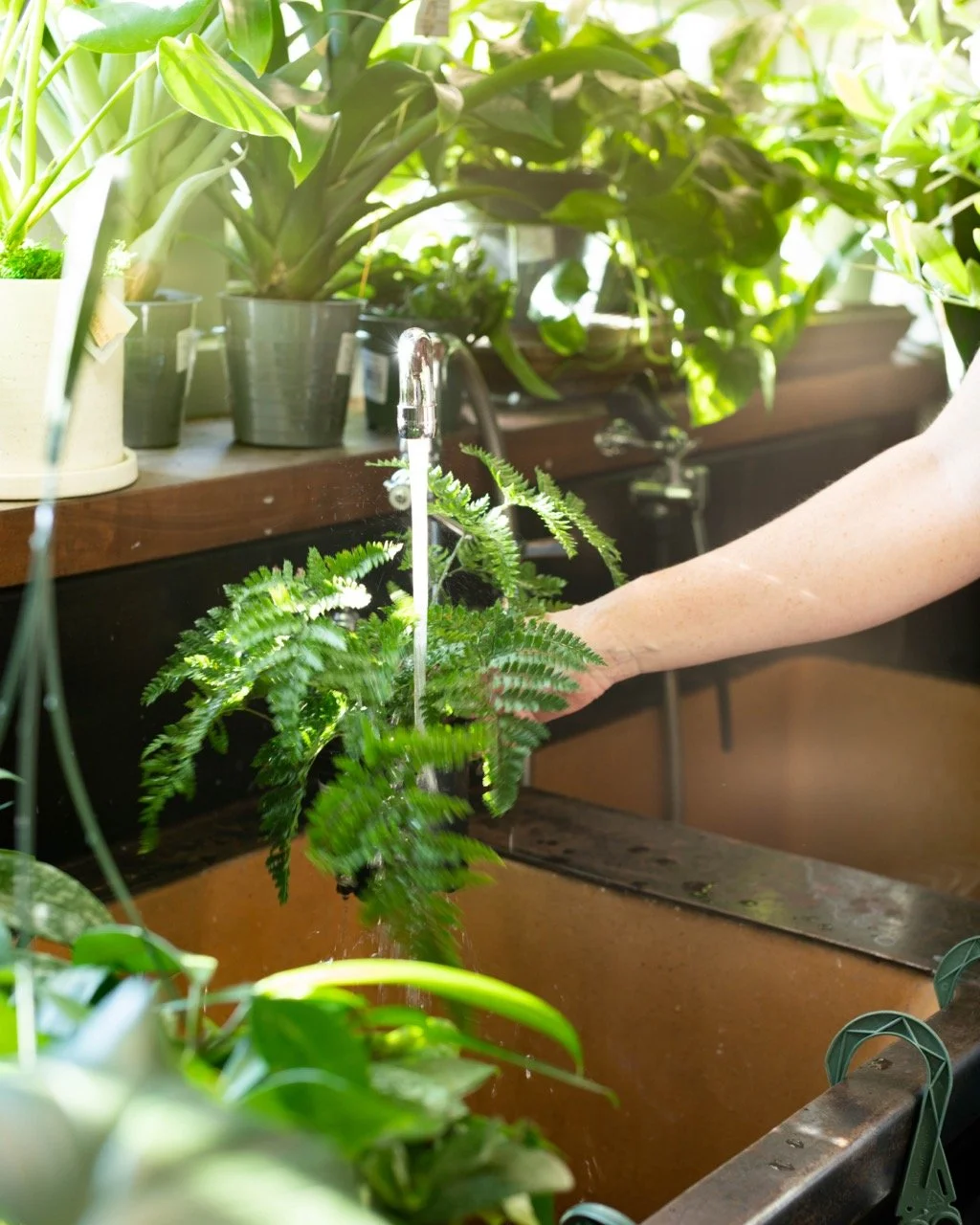10 Tips for successfully repotting your houseplant
10 Tips for Successfully Repotting Tour Houseplant
We get it - you want to treat your plant babies right and make sure they have everything they need. But, a lot of our plants are semi-dormant during our low light PNW winters and this means repotting during winter can open a can of worms. With spring right around the corner, here are our tips for successfully repotting your houseplants.
Wait till growing season to repot
In the PNW the total amount of light available to our plants in winter months is much lower than growing season (both because of our lovely gray skies and the total hours of daylight). Waiting to upsize your plant until growing season means the plant can send extra attention to plant roots - this is a root rot prevention strategy. We generally try to wait until Spring Break, and avoid repotting after labor day.
Read your plants signs that it needs a bigger pot
Many tropical houseplants don’t mind getting quite snug in their pot before being moved to a bigger size. How do you know when they are ready for upsizing? Check the bottom of the nursery container - are there roots reaching out the drainage holes? Has the plant been needing more regular watering? Then the plant may be ready. Time isn’t a great predictor because depending on the light and your fertilizing schedule, your houseplant may have just what it needs.
Avoid root rot and take baby steps to repotting
It is hard for plants to make it back from chronic overwatering or root rot. An easy way to avoid this is don’t increase the size of your pot more than 2 inches a season. If you have a 6” plant, upsize to an 8” pot.
Loosen the existing soil
Take a moment to loosen the existing soil and roots so new soil can easily fill in the space.
Don’t forget drainage
For maximum repotting success, repot your plant into a nursery container and then use your decorative containers as cache pots - especially on large houseplants (10” and above). Nursery pots can have 4-10x the drainage which allows excess water to escape and increases air flow - keeping nasty bacteria that thrive on wet conditions from getting a foothold. It also allows you to inspect your roots without sacrificing your pottery or roots.
Cut away rotten roots
If you are repotting because of root rot, inspect the newly exposed roots. If there are any areas that are rotten (soft and mushy), gently pull away and snip off. Consider removing additional soil that could hold bacteria and make sure all affected roots are trimmed before putting in the new soil.
Use good soil
Different plants need different soils. Some like it chunky (hello monstera), others sandy (we’re looking at you Euphorbia). Stop into your local plant shop and discuss what soil is best for your plant needs. At our SE Clinton and Schoolhouse Electric shops we have locally blended soils to balance nutrients and structure for most tropical houseplants. Do not use soil from the yard to fill up the space - this can introduce all sorts of pests.
A perfect time for a stake or moss pole
If you are repotting a climber, this is the perfect time to add a cedar stake, trellis, or moss pole. Place the stakes near stems with aerial roots that can adhere over time, and pack the soil around the stake to keep it sturdy. If you’ve loosened the roots and soil previously - you may be able to snug it right in inbetween the roots. Avoid materials that will rot.
For the love of all that is planty - skip the rocks
Whatever you do - skip lining the bottom of your pot with rocks and calling it drainage. If you absolutely can’t give your plants pots with drainage holes, then consider mixing in leca or using a chunky mix for good aeration. These will help your plant roots find their way through the soil without sitting in watering.
Water the soil in evenly
Give your plant a gentle watering. This is where a slow and even watering can really pay off (this is a good tip in general) by moving water into areas of air pockets. If you notice the soil settling, you can use a chopstick or the back of a paintbrush to lightly tap the soil down.
Repotting your plant with fresh soil is a great way to give it fresh nutrients for the growing season. Just make sure to use quality soils, don’t forget the drainage, and make sure your plant is ready. If you need any help, stop by our SE Clinton shop where we offer repotting and have a solid collection of upcycled nursery pots.

